Three easy ways to determine the power output for your strobes when shooting in daylight. Learn how to match the aperture you’ve chosen when balancing strobes with sunlight. Any of these 3 effective ways will help determine the power output of your strobes or flash when you’re outside working with strobes and daylight on location.
Hi, this is Jay P. Morgan. Today on The Slanted Lens I’ve got Dwight Taylor here with me. Let’s look at the three ways to determine what the power setting should be on your strobes in order to match it to the aperture you’ve chosen when you’re balancing strobes with sunlight.
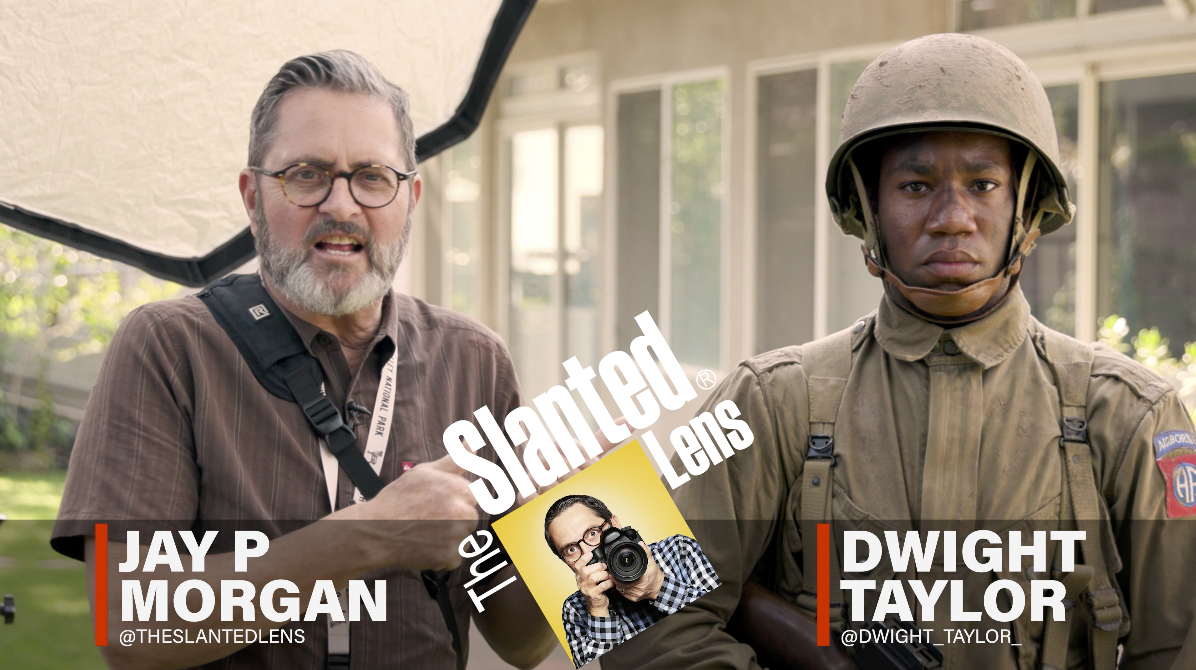
Special thanks to Professional Photographers of America for sponsoring this video.
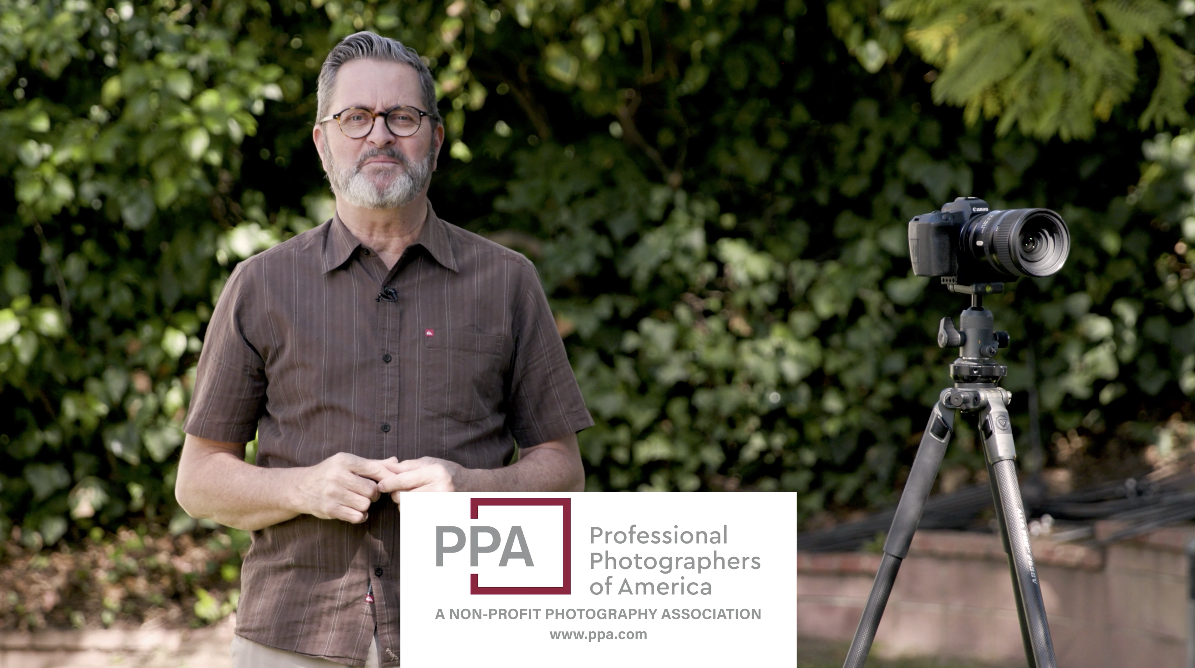 In a previous video, I broke down my very simple equation for balancing strobes with sunlight.
In a previous video, I broke down my very simple equation for balancing strobes with sunlight.
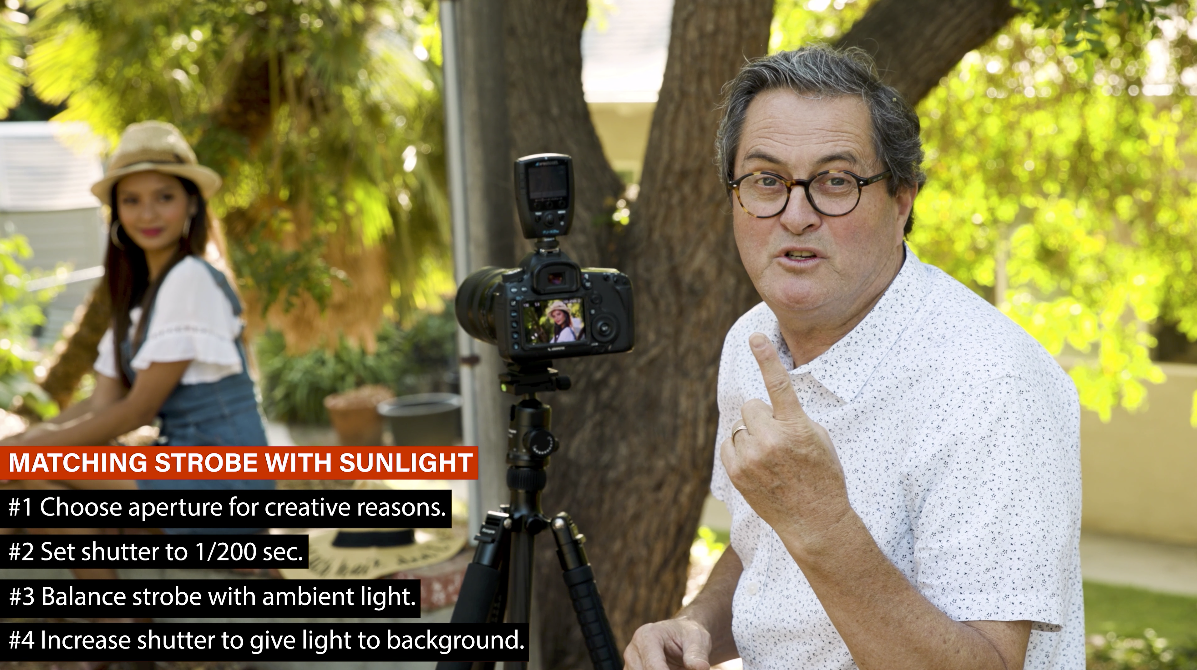 There’s a simple formula: 1. Choose your aperture for creative reasons. 2. Set your shutter at 1/200 second. 3. Balance your strobe power. Dial it up and down until it matches the aperture. 4. Start opening up that shutter until you like the background the way it looks. And that integrates those two together and then shoot away. It’s a very simple equation.
There’s a simple formula: 1. Choose your aperture for creative reasons. 2. Set your shutter at 1/200 second. 3. Balance your strobe power. Dial it up and down until it matches the aperture. 4. Start opening up that shutter until you like the background the way it looks. And that integrates those two together and then shoot away. It’s a very simple equation.
 You should go back to that video and reference it because what we’re going to talk about today will help build on that foundation. The part of that equation that some people had a little bit of a hard time with is, “How do I determine the power setting of my strobe in order to balance that to the creative aperture that I’ve chosen?” When I say creative aperture, what I mean is, I’ve chosen an aperture for creative reasons: shallow depth of field or deep depth of field. F/2.8 if I want a shallow depth of field and nice bokeh. F/8 if I want a deeper depth of field because I’m photographing a family.
You should go back to that video and reference it because what we’re going to talk about today will help build on that foundation. The part of that equation that some people had a little bit of a hard time with is, “How do I determine the power setting of my strobe in order to balance that to the creative aperture that I’ve chosen?” When I say creative aperture, what I mean is, I’ve chosen an aperture for creative reasons: shallow depth of field or deep depth of field. F/2.8 if I want a shallow depth of field and nice bokeh. F/8 if I want a deeper depth of field because I’m photographing a family.
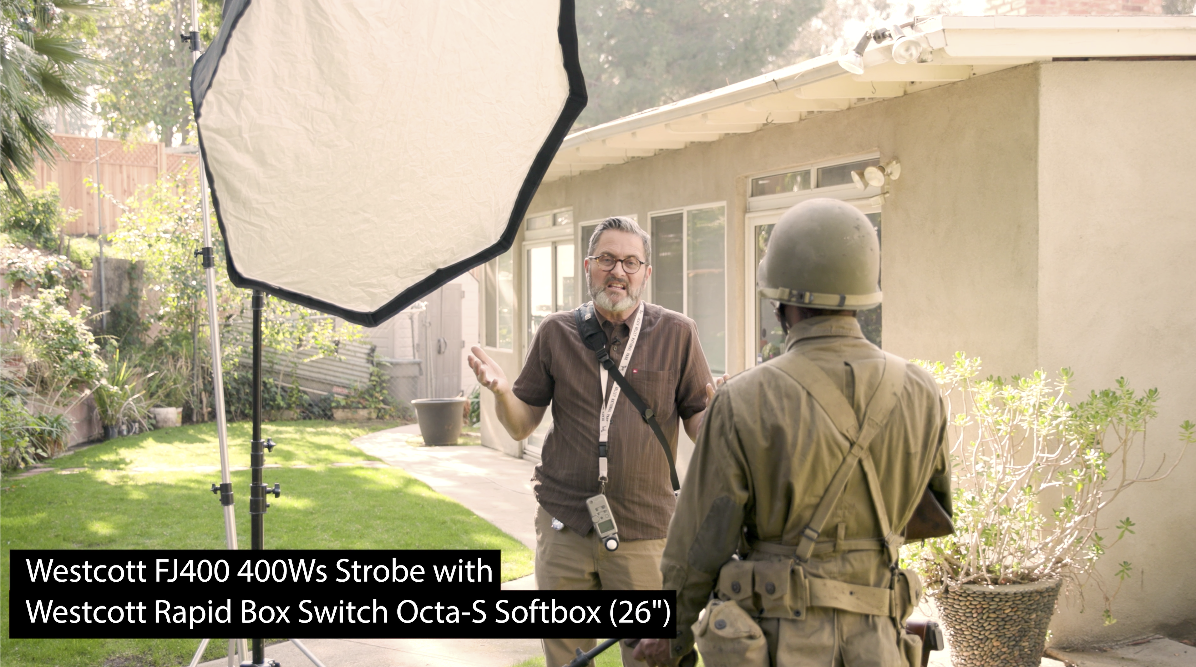 Okay, so here’s the setup. I have a soft box. And I generally put the face of the soft box about six feet away from my person, from their face. That’s generally where I set things up. Most people work in this kind of area, within five to six feet with their light. You don’t set this light out 8, 10 and 12 feet. It’s too far away and becomes less efficient and more hard. If we want to wrap it all it’s going to be in fairly close at about 5-6 feet away from our subject matter.
Okay, so here’s the setup. I have a soft box. And I generally put the face of the soft box about six feet away from my person, from their face. That’s generally where I set things up. Most people work in this kind of area, within five to six feet with their light. You don’t set this light out 8, 10 and 12 feet. It’s too far away and becomes less efficient and more hard. If we want to wrap it all it’s going to be in fairly close at about 5-6 feet away from our subject matter.
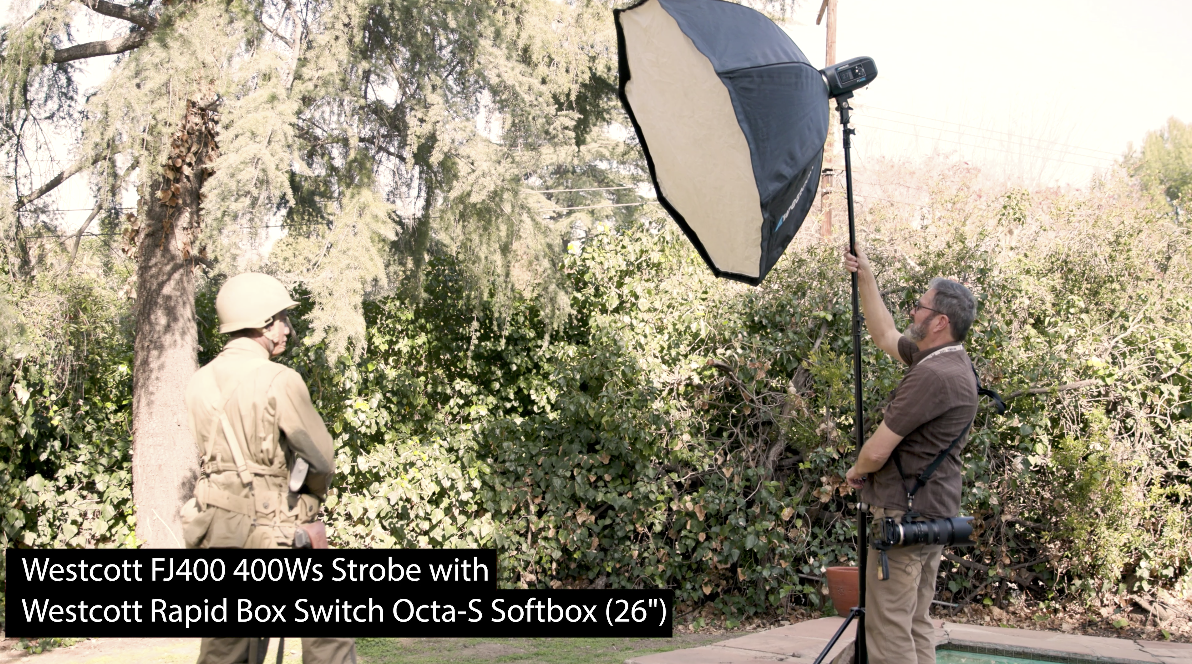 So now that I’ve got my soft box set, what’s the easiest fastest way for me to be able to determine what the power setting should be on my strobe? Well it’s using a strobe meter. It’s just a flash meter that has a strobe setting on it. You can use either ambient or strobe. I’ve got this set to strobe.
So now that I’ve got my soft box set, what’s the easiest fastest way for me to be able to determine what the power setting should be on my strobe? Well it’s using a strobe meter. It’s just a flash meter that has a strobe setting on it. You can use either ambient or strobe. I’ve got this set to strobe.
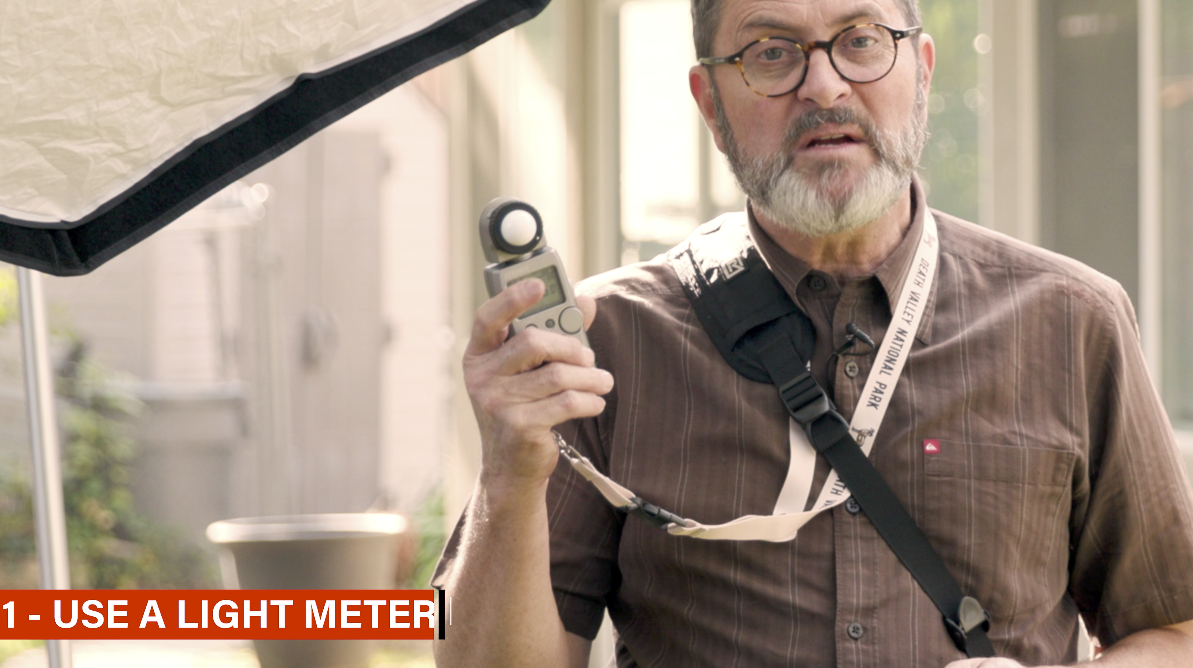 I’ve already determined my camera settings to 100 ISO. So I’m at f/8, and about 1/200 of a second. I want f/8 to be my aperture. So now I need to balance the strobe power to f/8.
I’ve already determined my camera settings to 100 ISO. So I’m at f/8, and about 1/200 of a second. I want f/8 to be my aperture. So now I need to balance the strobe power to f/8.
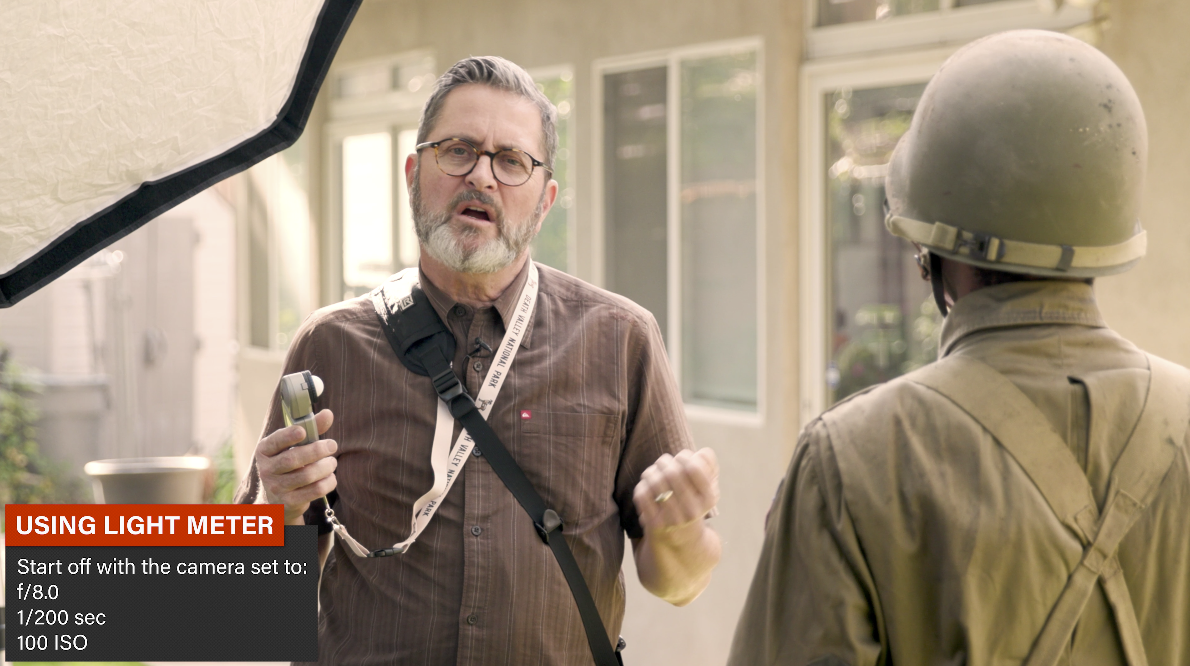 The first thing I do is I’m put my finger on the button of my flash trigger. And then I’m going to come up here by the talent’s face and I’m going to aim my flash meter straight back towards the camera. I leave the bulb out. I aim straight back towards the camera. I make sure I’m not in the way of it. And it’s at F/11. So it’s too hot.
The first thing I do is I’m put my finger on the button of my flash trigger. And then I’m going to come up here by the talent’s face and I’m going to aim my flash meter straight back towards the camera. I leave the bulb out. I aim straight back towards the camera. I make sure I’m not in the way of it. And it’s at F/11. So it’s too hot. 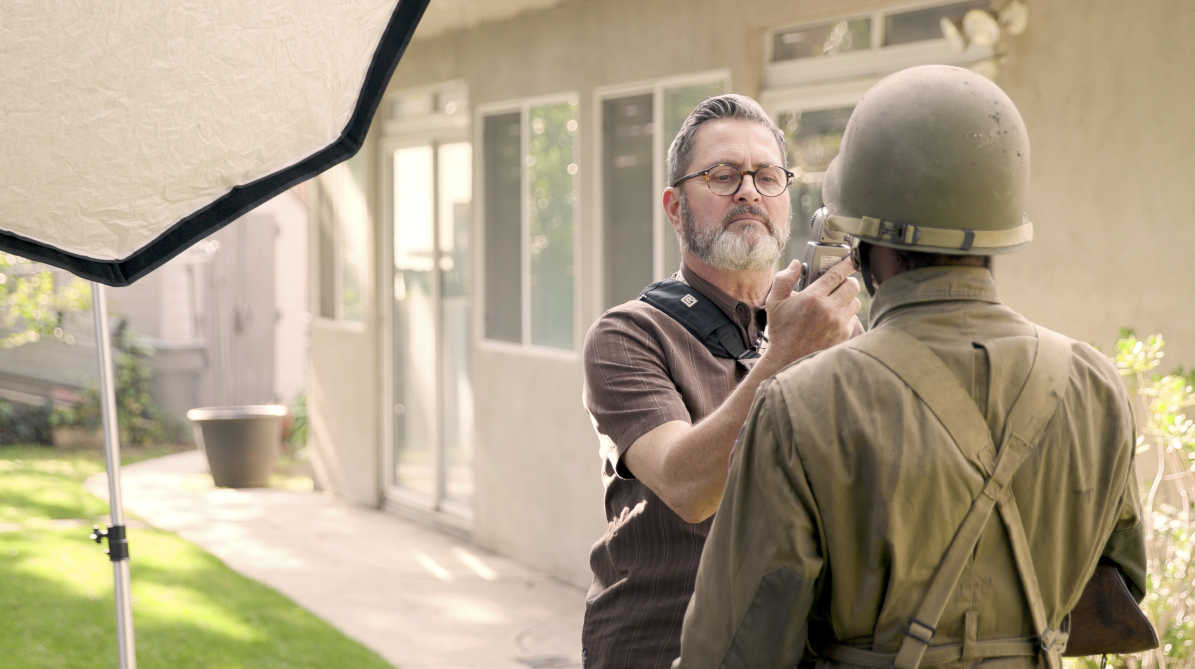 So I’m going to dial my strobe down on my trigger, which is what’s so nice about the FJ400 and using the trigger from the camera. I can now just dial this down one stop. I’m going to go down a stop and about a third.
So I’m going to dial my strobe down on my trigger, which is what’s so nice about the FJ400 and using the trigger from the camera. I can now just dial this down one stop. I’m going to go down a stop and about a third. 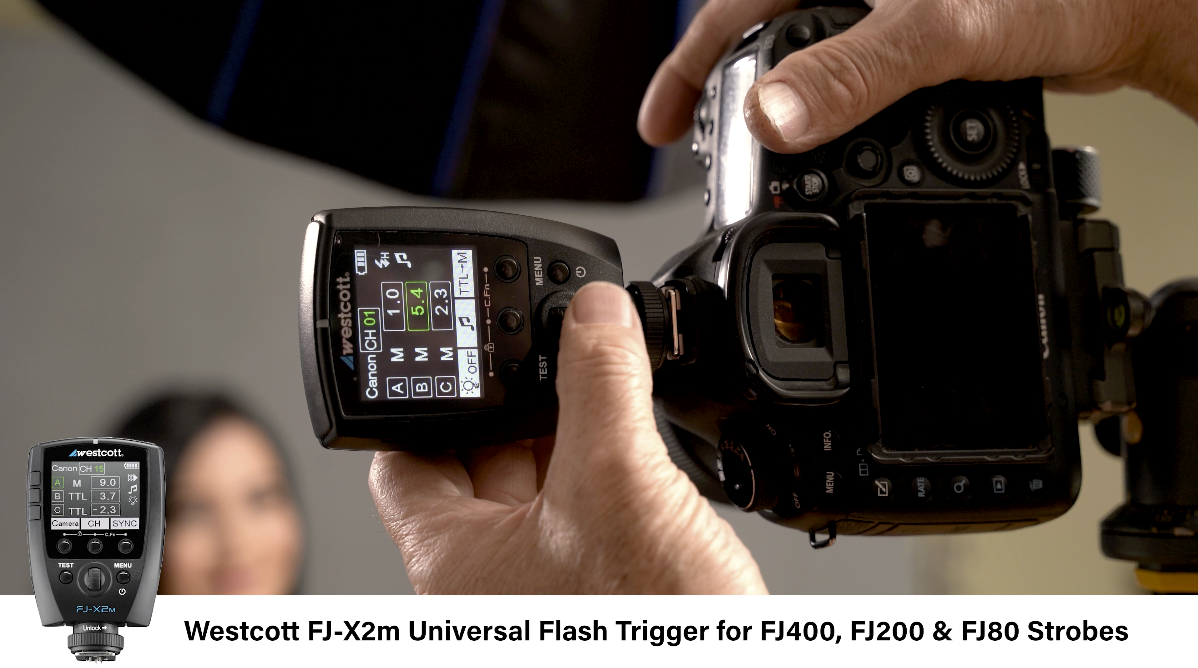 Now I’m going to take another meter reading and it’s f/8. That’s exactly what I want. Now I can shoot away. So I do a couple of shots at f/8. So that’s the easiest way to determine what the power setting should be on your strobe.
Now I’m going to take another meter reading and it’s f/8. That’s exactly what I want. Now I can shoot away. So I do a couple of shots at f/8. So that’s the easiest way to determine what the power setting should be on your strobe. 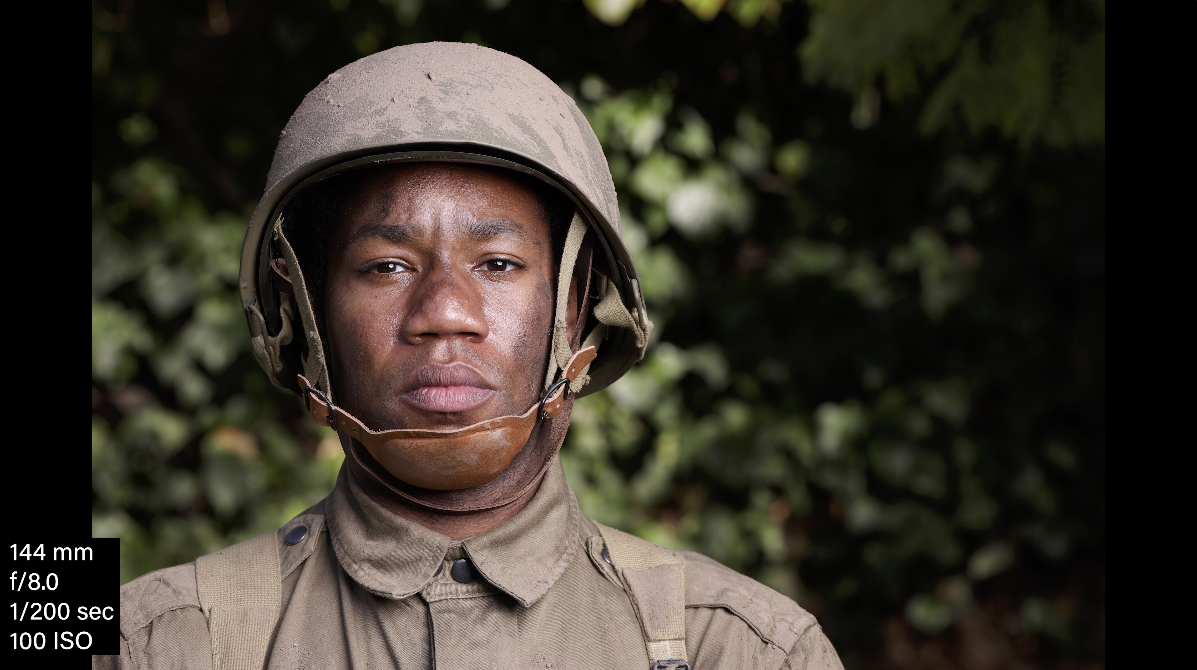 And that is using a light meter, you just dial the power up or down until you get the power output at his face to equal whatever aperture you have chosen. And then you can shoot away.
And that is using a light meter, you just dial the power up or down until you get the power output at his face to equal whatever aperture you have chosen. And then you can shoot away.
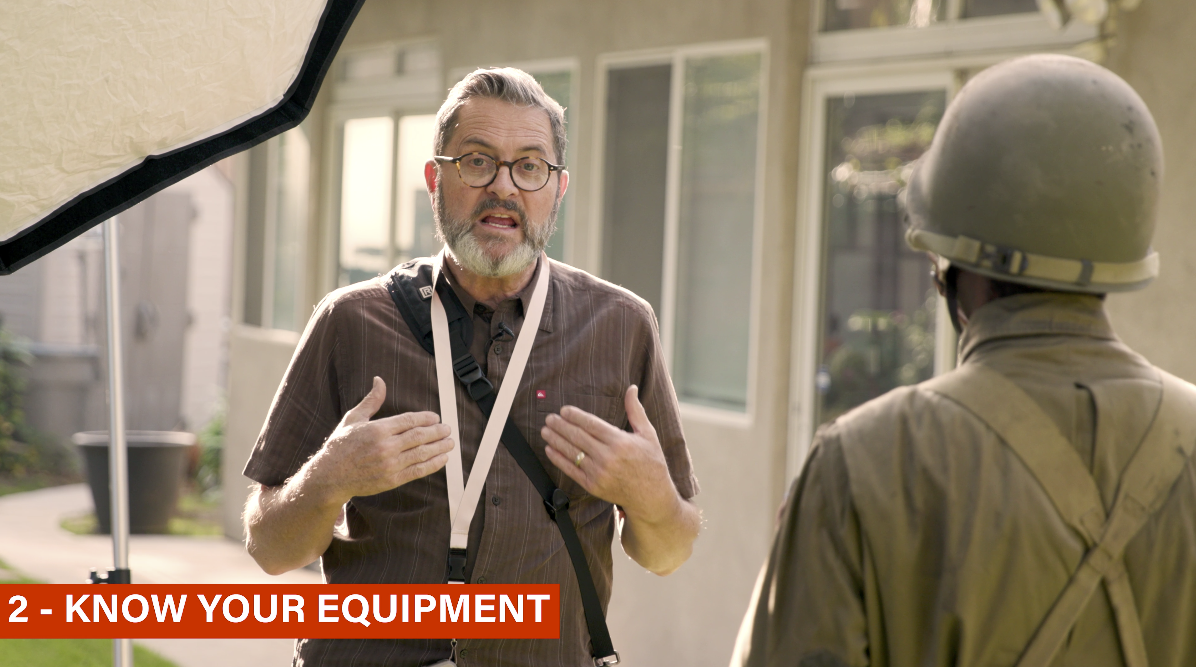 What’s the second way you can determine what the power output of your strobe ought to be? You know, the easiest for me is that I’ve just done this enough that I take a good guess. I know that my strobe or my soft box is about five feet away from my subject matter.
What’s the second way you can determine what the power output of your strobe ought to be? You know, the easiest for me is that I’ve just done this enough that I take a good guess. I know that my strobe or my soft box is about five feet away from my subject matter.  I know on full power for a 400 watt second strobe head, with a soft box, I’m going to be about f/8. If it’s got a baffle in it, I may set it at a little less than f/8. But it’s probably going to be about f/8. So I just simply set my camera at f/8. I take a shot. Dang close, I mean, it’s dang close.
I know on full power for a 400 watt second strobe head, with a soft box, I’m going to be about f/8. If it’s got a baffle in it, I may set it at a little less than f/8. But it’s probably going to be about f/8. So I just simply set my camera at f/8. I take a shot. Dang close, I mean, it’s dang close.
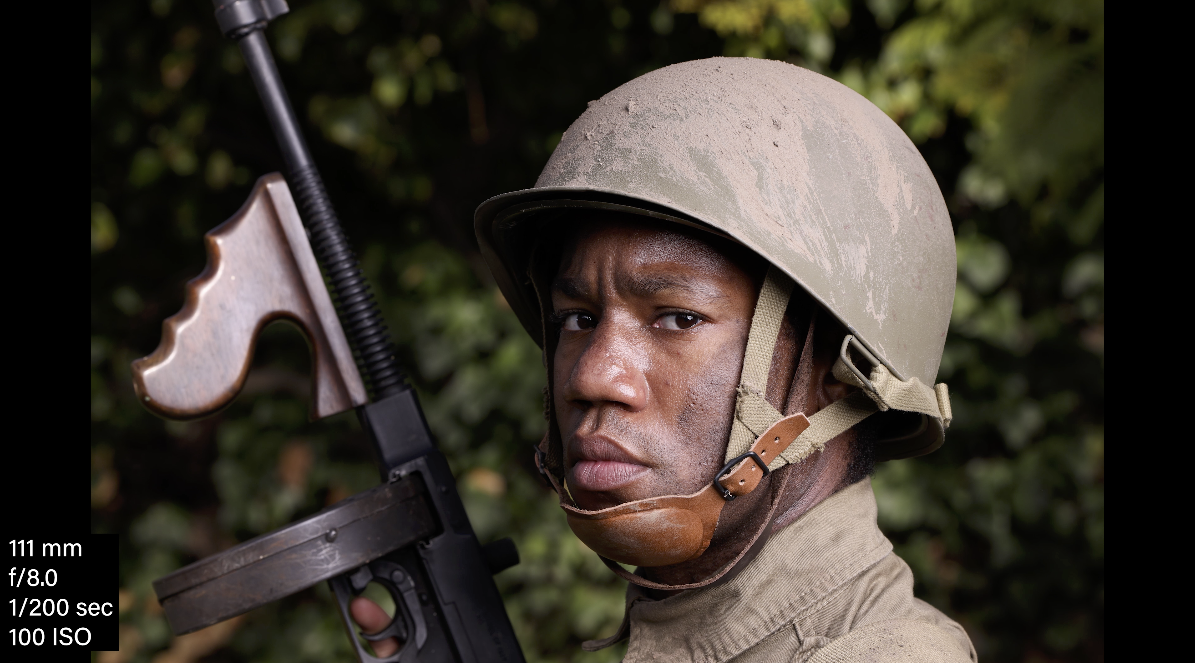 So do a test. Put your box about five or six feet away from your subject matter. Your box, the way you like to set it up. Put it on full power, and just start going through the apertures until you hit the aperture that looks exactly right to you. Then know that’s your go to setup. That’s a quick way to do it.
So do a test. Put your box about five or six feet away from your subject matter. Your box, the way you like to set it up. Put it on full power, and just start going through the apertures until you hit the aperture that looks exactly right to you. Then know that’s your go to setup. That’s a quick way to do it. 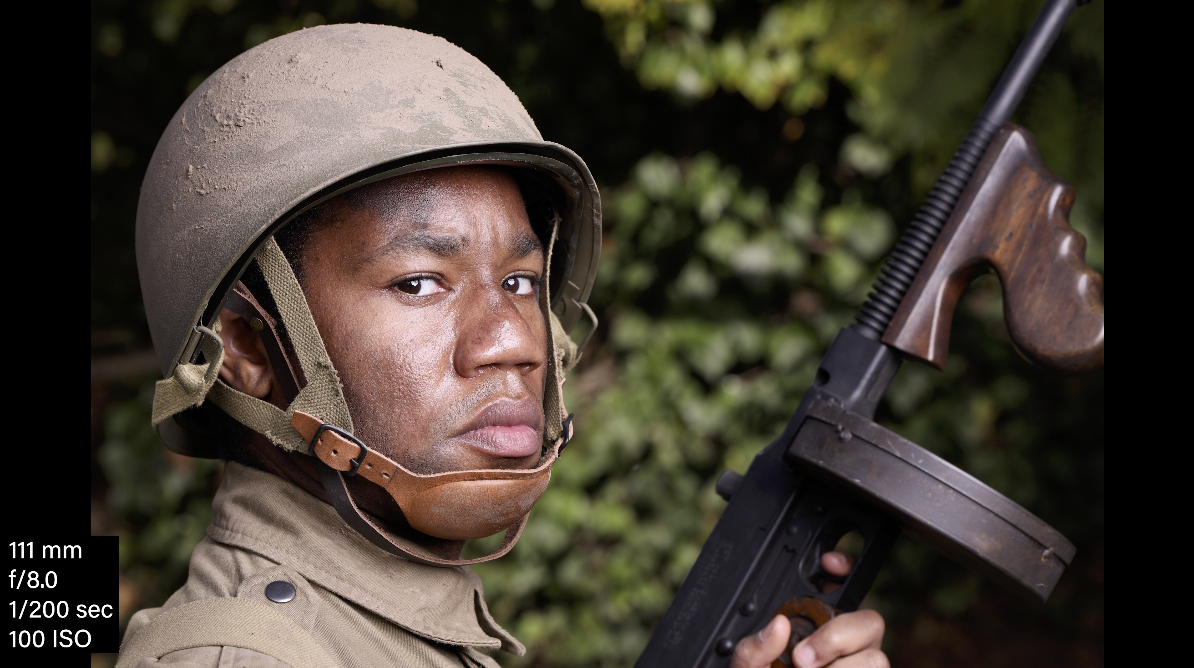 You don’t need a piece of equipment to be able to accomplish that. Just use the knowledge you have because you’ve tested your strobes a couple of times and you know about what that’s going to be. That I think is the fastest way. That’s the one I use all the time.
You don’t need a piece of equipment to be able to accomplish that. Just use the knowledge you have because you’ve tested your strobes a couple of times and you know about what that’s going to be. That I think is the fastest way. That’s the one I use all the time.
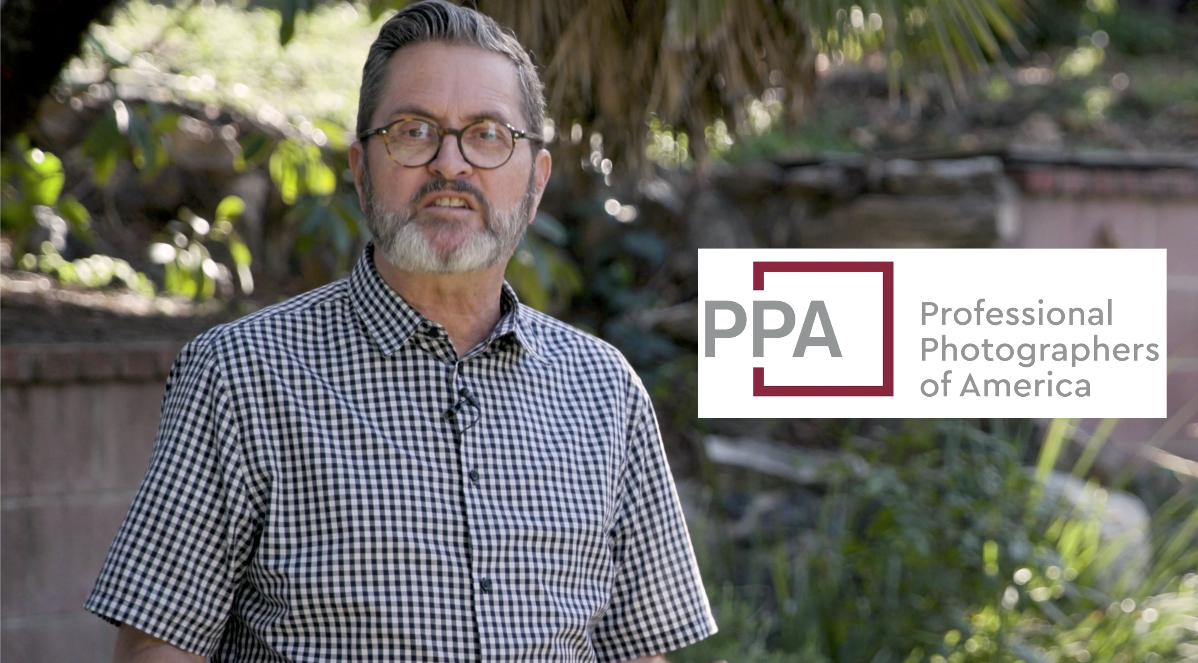 Hey, Morgan, do you think pushing the shutter button is 90% of photography? Well, it’s not. It’s more like 10% of photography. Business is 90% of photography. And that’s why you join an organization like Professional Photographers of America. They’ve got great things like insurance. What if someone steals that camera? Well, there you have it.
Hey, Morgan, do you think pushing the shutter button is 90% of photography? Well, it’s not. It’s more like 10% of photography. Business is 90% of photography. And that’s why you join an organization like Professional Photographers of America. They’ve got great things like insurance. What if someone steals that camera? Well, there you have it.  They also have excellent education where you can earn degrees to be able to progress. You can have people look at your prints. There are events and webinars where you come together and learn from each other. There are great business resources where you can get contracts and the different business tools you need to run your business.
They also have excellent education where you can earn degrees to be able to progress. You can have people look at your prints. There are events and webinars where you come together and learn from each other. There are great business resources where you can get contracts and the different business tools you need to run your business. 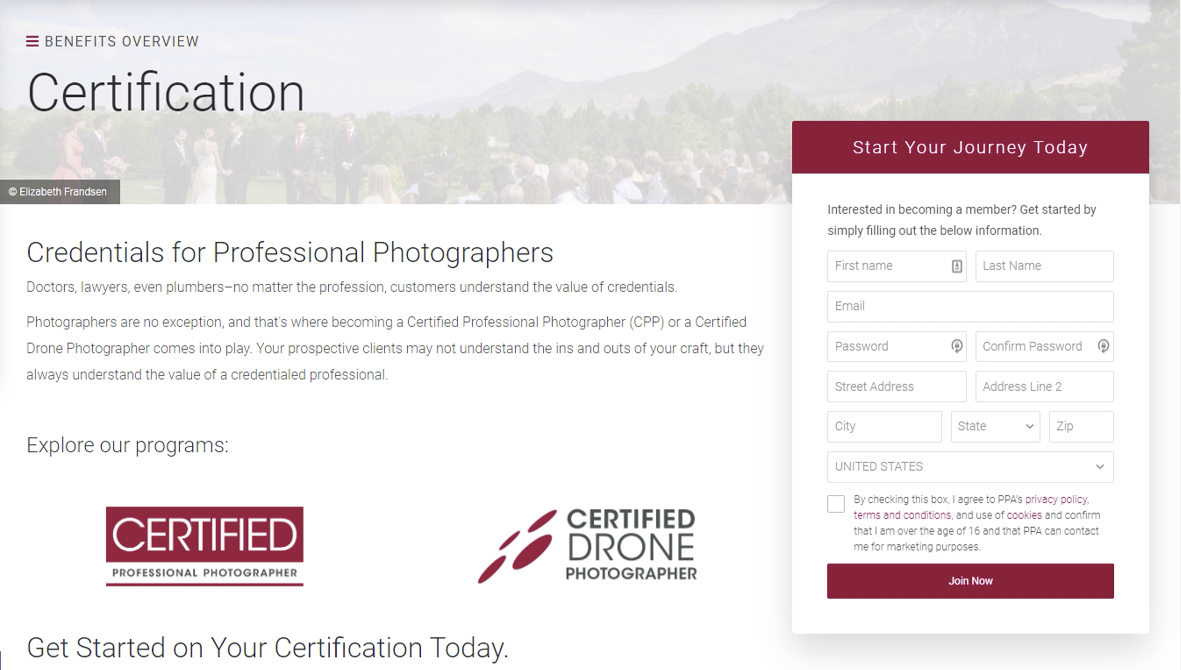 There are excellent marketing tools as well so you can market your business and help it grow. That’s the kind of support that you need. That social network is super important as well because you come together with other photographers. You can become like me or I can become like you.
There are excellent marketing tools as well so you can market your business and help it grow. That’s the kind of support that you need. That social network is super important as well because you come together with other photographers. You can become like me or I can become like you.  And they also have a magazine they send out each month to keep you up to date with what’s going on in the industry. They even have telemedicine where you can call in to be able to get the medical advice you need for a small fee each month. It’s very, very inexpensive. So Professional Photographers of America. All the things you need to do to be able to run your business. Join now with the link and you’ll get $25 off your membership. https://www.ppa.com/join/the-slanted-lens
And they also have a magazine they send out each month to keep you up to date with what’s going on in the industry. They even have telemedicine where you can call in to be able to get the medical advice you need for a small fee each month. It’s very, very inexpensive. So Professional Photographers of America. All the things you need to do to be able to run your business. Join now with the link and you’ll get $25 off your membership. https://www.ppa.com/join/the-slanted-lens
So what’s the third way to figure out what your power output should be on your strobe? Well, it’s a really dumb way. And it used to be used in every Walmart, Kmart, Penney’s photo studio. It’s a piece of string.  Once you set this up once, and you know that from the face of the soft box to your subject matter is f/8, then you cut a piece of string. You tape it to the front of your soft box. And then you cut it off.
Once you set this up once, and you know that from the face of the soft box to your subject matter is f/8, then you cut a piece of string. You tape it to the front of your soft box. And then you cut it off. 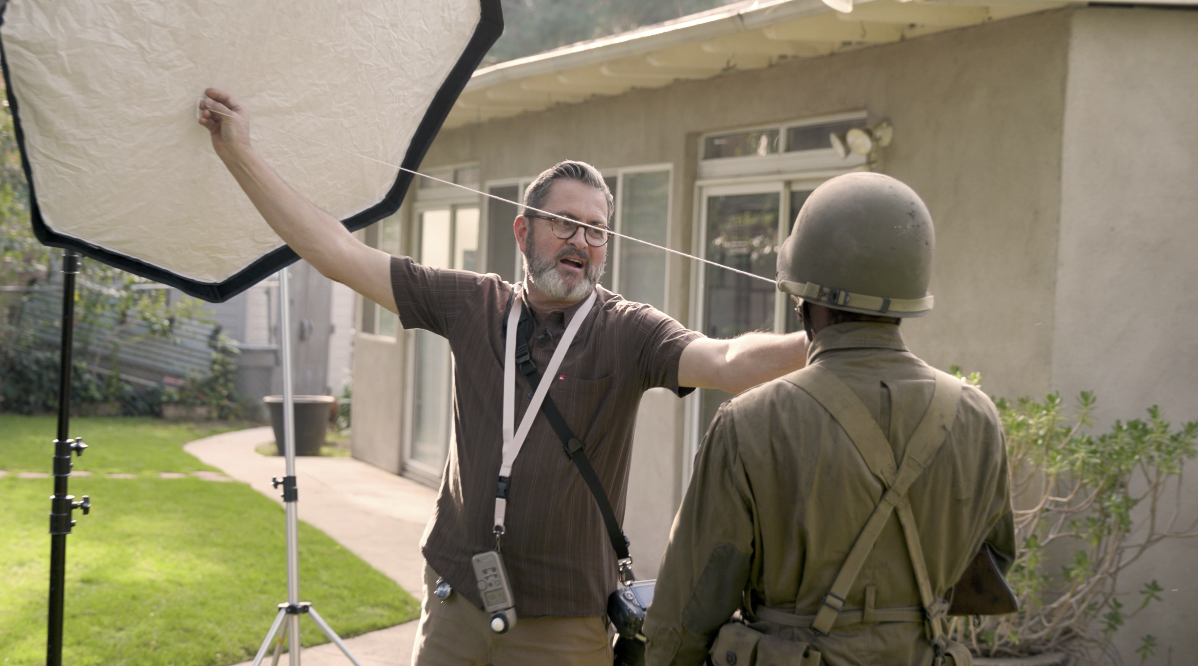 Now every time you set up it up you put up your soft box and have your talent hold the string at their nose.
Now every time you set up it up you put up your soft box and have your talent hold the string at their nose. 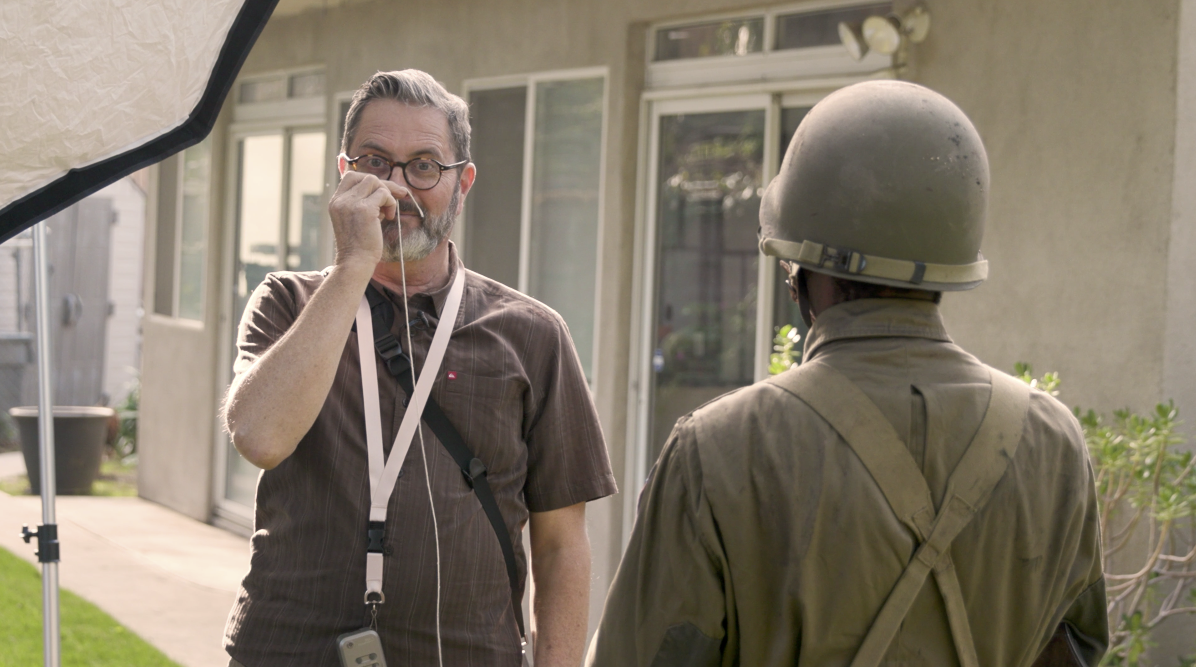 You move the soft box back and forth to where it’s at the right distance. And now you can shoot away. People do this in the studio all the time. You know when you have novices working with your equipment, just tape a piece of string on there and you tell them, “When this string is at the person’s face, that’s f/8. I don’t suggest this one, not a great idea. You’re beyond that. You’re bigger than that.
You move the soft box back and forth to where it’s at the right distance. And now you can shoot away. People do this in the studio all the time. You know when you have novices working with your equipment, just tape a piece of string on there and you tell them, “When this string is at the person’s face, that’s f/8. I don’t suggest this one, not a great idea. You’re beyond that. You’re bigger than that.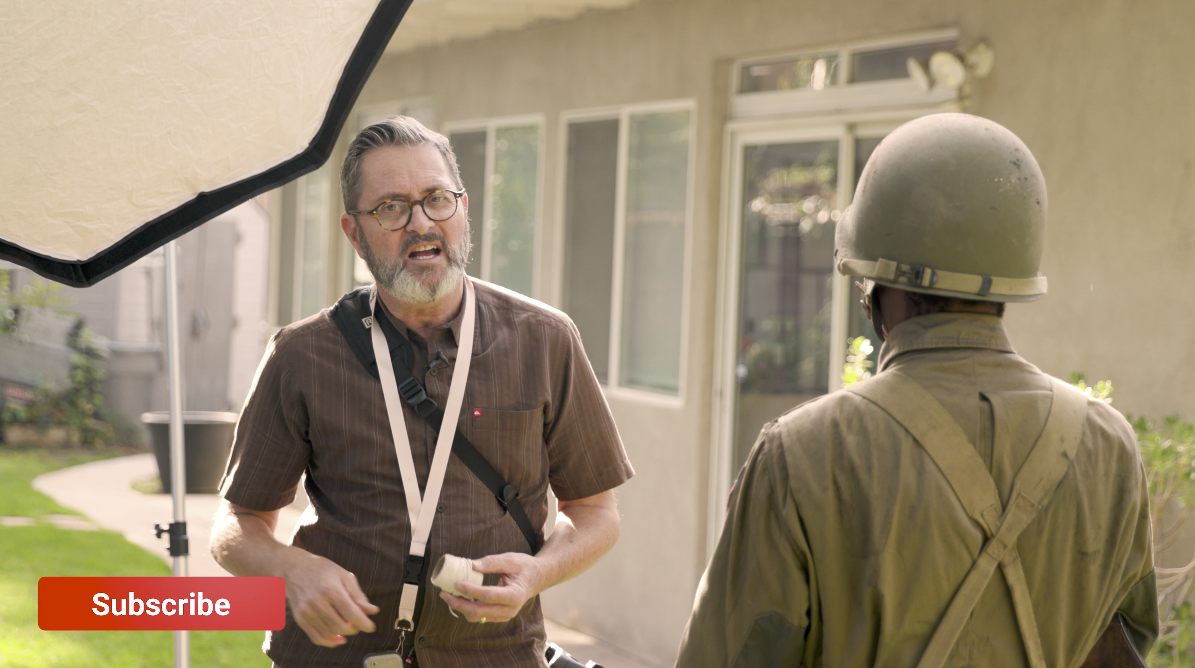
The one that is easiest truly is to understand enough about your equipment to know that at full power, about five or six feet away from your subject matter is going to give you a certain aperture. That’s your go to setting and do that every single time. 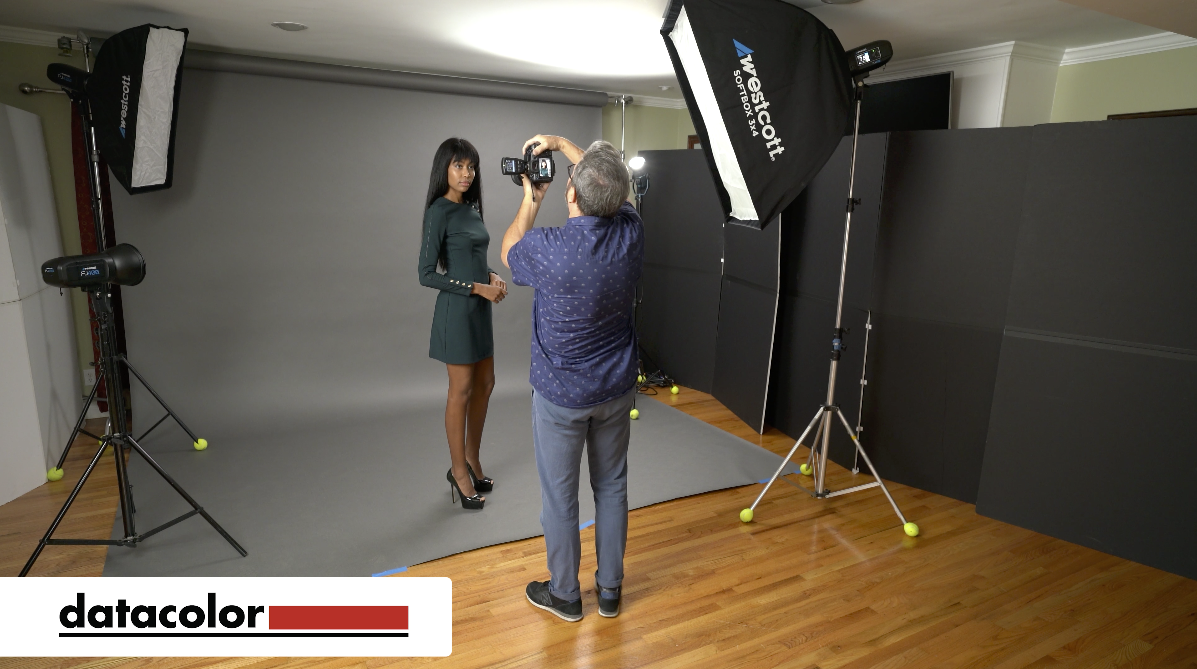 And then you can make adjustments from there, depending on your creative decision about aperture and exactly how much depth of field you want. So you know exactly where to start. Set it up. Start with that and then make your adjustments and then you’re ready to go.
And then you can make adjustments from there, depending on your creative decision about aperture and exactly how much depth of field you want. So you know exactly where to start. Set it up. Start with that and then make your adjustments and then you’re ready to go. 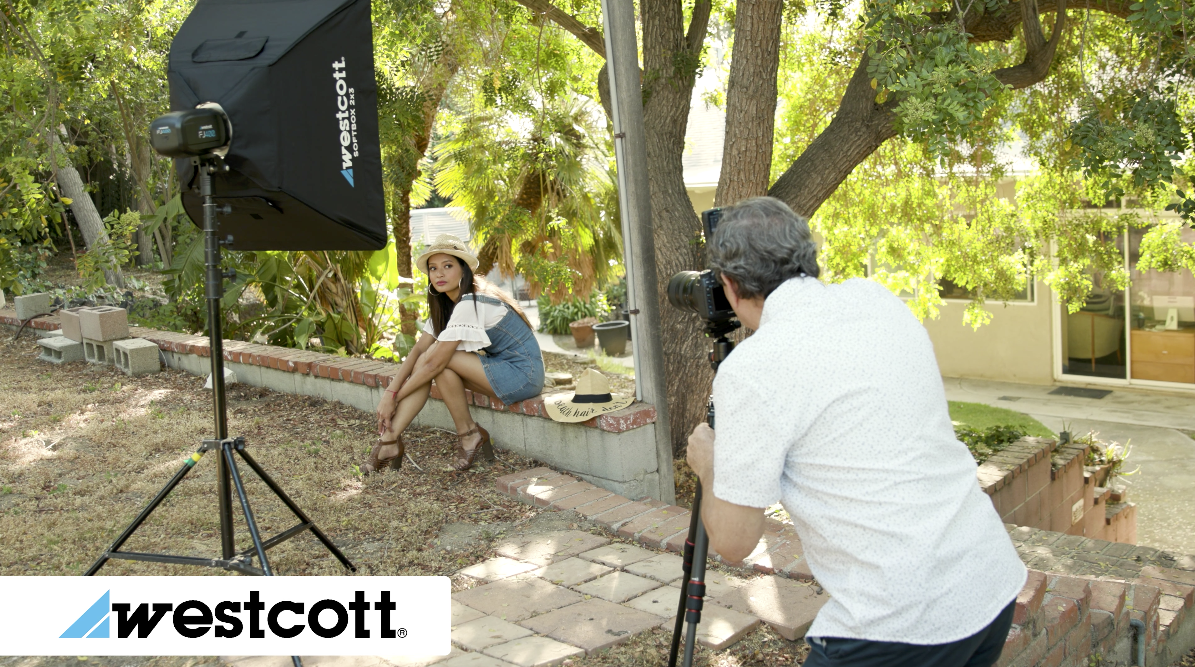 So there you have it three effective ways to determine the power output of your strobes when you’re trying to balance it with the creative aperture you’ve chosen, when you’re outside working with strobes and daylight on location. So leave us a question or comment on our YouTube channel.
So there you have it three effective ways to determine the power output of your strobes when you’re trying to balance it with the creative aperture you’ve chosen, when you’re outside working with strobes and daylight on location. So leave us a question or comment on our YouTube channel.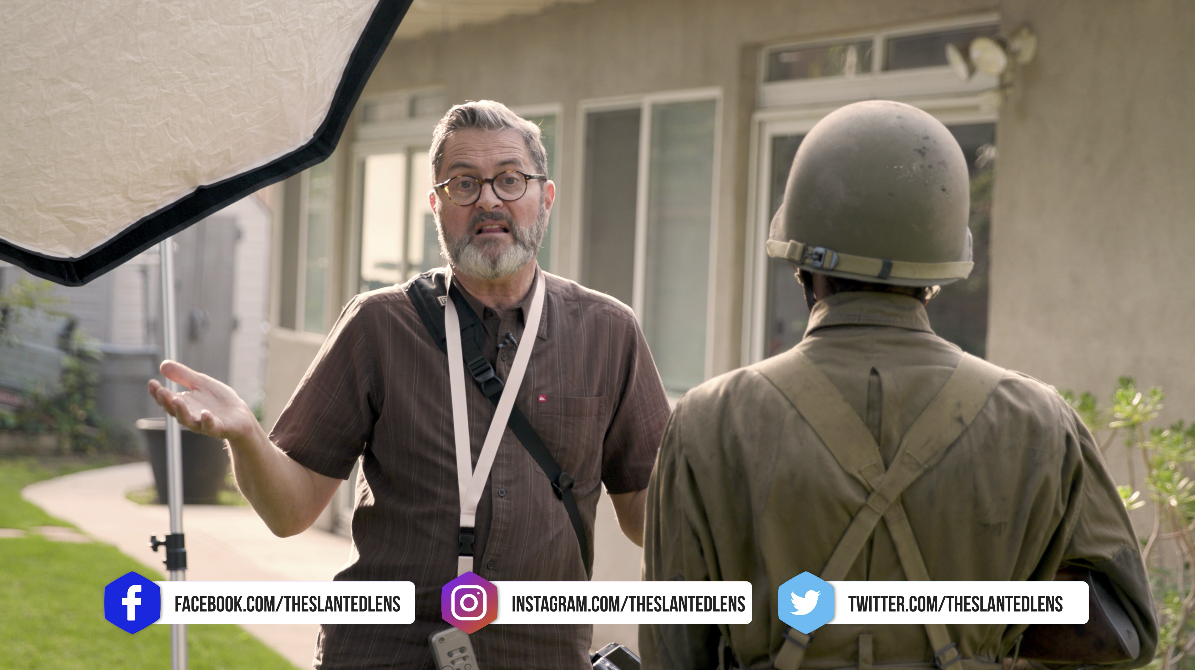
Keep those cameras rollin’ and keep on clickin’.